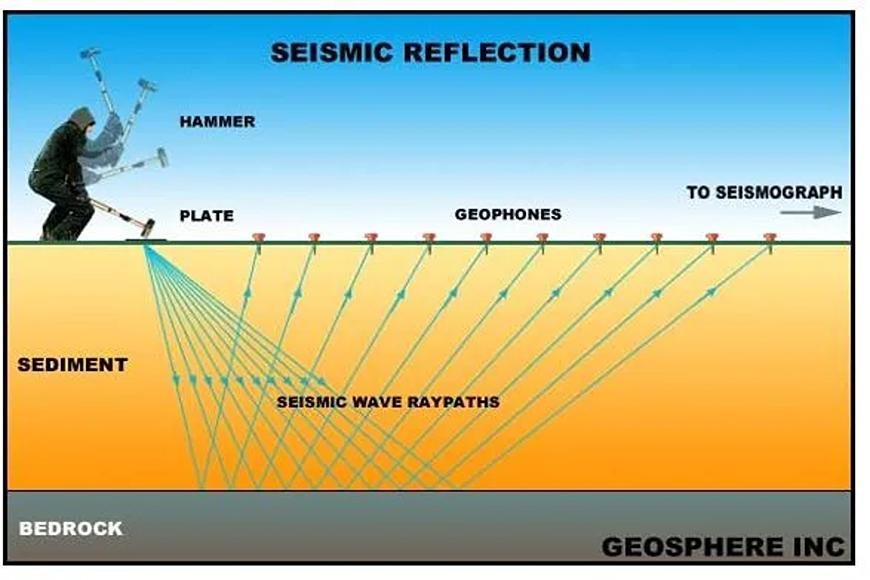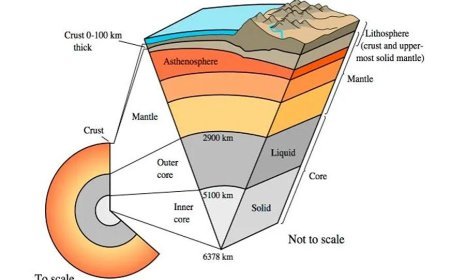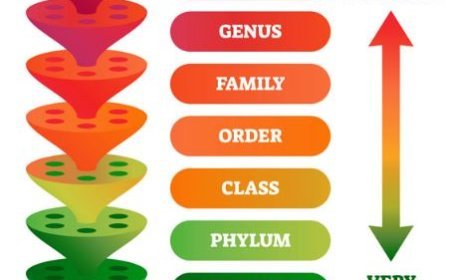SEISMIC REFLECTION METHOD
Seismic reflection uses sound waves to map what lies beneath the surface.

Seismic reflection method
- This method is used to map the structure of subsurface formations by measuring the time it takes a seismic wave generated in the earth by dynamite, mechanical impact, or vibration to return to the surface after reflection from an interface between formations with different physical properties.
- The reflections are collected by detecting interments known as geophones that are responsive to ground movements.
- Variations in reflection times on the surface suggest structural details in the layers underneath.
- Using seismic velocity information, depths to reflect may be calculated.
- Reflections from depths of up to 20,000 feet may be seen from a single explosion, allowing geologic features to be established across the sedimentary layer in most cases.
- S.P. G Reflected Ray Layer 1, V1 Layer 2, V2 Reflector
- The reflection method may be used to find and map features such as anticlines, faults, salt domes, and reefs. Many of these are related to the extraction of oil and gas.
What's Your Reaction?



































